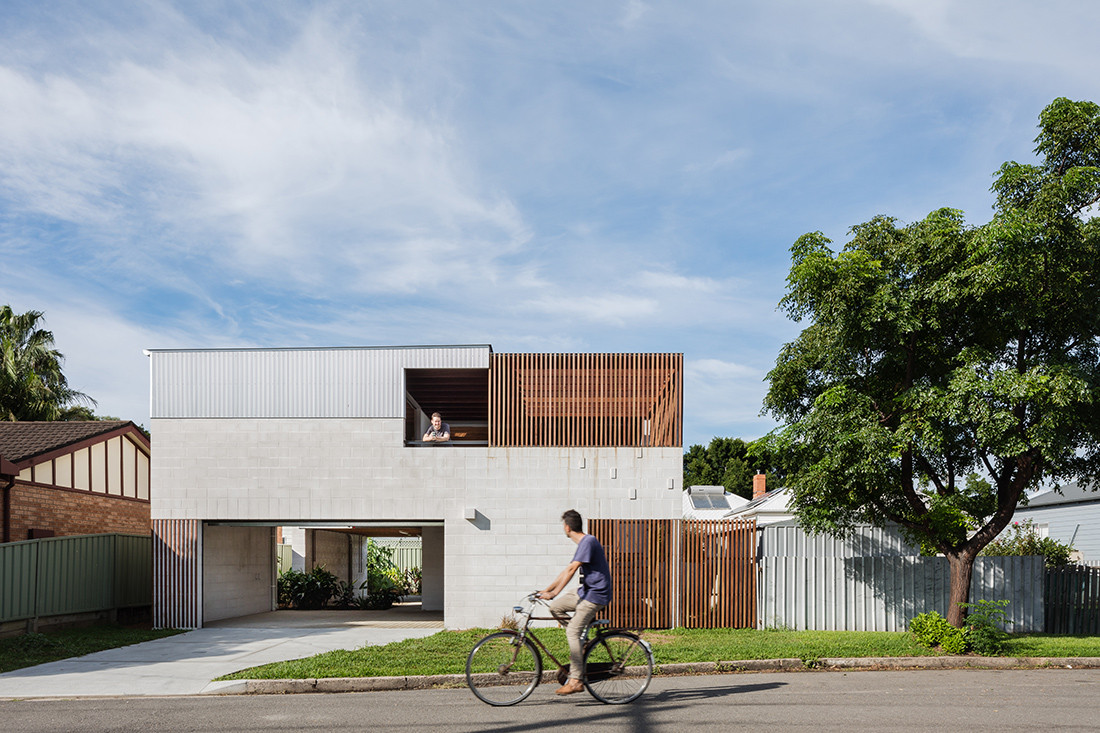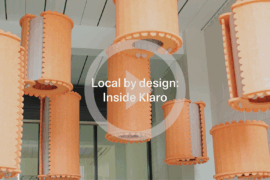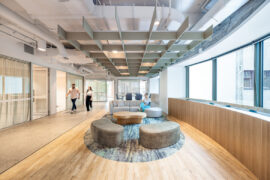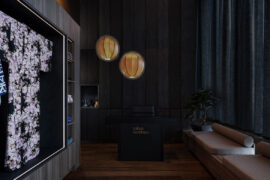Property value, connection and tax exemptions headline a list of reasons why Australians are moving back into the family home, but will it continue?

Matt Gibson Architecture + Design's Mixed Use House, a five-storey, multi-generational domicile that could provide a window into the future of what fully fledged multi-generational living arrangements can look like.
May 12th, 2021
With the Federal Budget released officially last night, much of the spotlight is on the money being poured into aged care, in light of the Royal Commission. As the ageing community continues its evolution towards being integrated into wider society, multi-generational households are on the rise nationwide, with the introduction of a Capital Gains Tax (CGT) exemption for the building of granny flats and tiny homes on Australian properties to be introduced by the Commonwealth on July 1 2021, provided it passes through Parliament. The projected increase in multi-generational housing is a flow-on effect from the COVID-19 pandemic, and it looks set to continue its rise, according to Hatch RobertsDay.

Are we about to see a further rise in multi-generational living arrangements?
While the residence at the rear of some blocks is typically reserved for the grandparents, the economic fallout of the pandemic has meant a lot of youngsters have moved back into the family home as a result. Hatch RobertsDay Principal Craig Christensen says there are many factors for this occurrence.
“Some of the multi-generational housing increase can be attributed to the impact of COVID on the employment of young Australians and an increasingly expensive housing market,” he says.
“We already saw a significant portion of young Australians move back home to live with their families last year due to these impacts. It is also becoming more common for younger generations to stay at home longer and for extended families to live in the same household.”

 Vikki’s Place, in Newcastle, NSW, designed by Curious Practice. Photography by Katherine Lu
Vikki’s Place, in Newcastle, NSW, designed by Curious Practice. Photography by Katherine Lu
A study conducted by the University of New South Wales found that 20 percent of Australians live in a multi-generational household, with that number increasing to 25 percent for Sydneysiders. Interestingly, the study was completed in January 2020, two months before the pandemic. With children staying home and the CGT exemption expected to be introduced, Christensen believes the percentage will only continue to climb.
“Living in a multi-generational house is likely to rise in the coming years. The population is getting older and there is a growing need for options that can better serve ageing Australians, particularly given the fact that a large proportion desire ageing in place and living with their families.”

 Mixed Use House, Melbourne, VIC, by Matt Gibson Architecture + Design. Photography by Shannon McGrath.
Mixed Use House, Melbourne, VIC, by Matt Gibson Architecture + Design. Photography by Shannon McGrath.
Upon completion of the UNSW study, Senior Research Fellow Dr Edgar Liu said the national aged care debacle was a telling factor in the popularity of multi-generational housing, with a desire to keep close connection with loved ones a big reason for the shift away from ageing communities.
“There’s an aversion to moving into aged care for obvious reasons we see now, with the Aged Care Royal Commission, and policy-wise, the government doesn’t want people to move into institutions; they want people to live in the general community. So, more families are considering providing that care and support themselves,” he says in an article with the UNSW’s media arm.
The tax exemption is encouraging families to build granny flats, with a 2019 report carried out by property specialists CoreLogic and Archistar revealing the construction of a granny flat on an Australian block of land could increase a house’s value by up to 30 percent. While the report is from 2019, with the continual rise of house prices post-pandemic, the increase in property value could potentially be higher in 2021 and beyond.

 Mermaid Multi House, in Mermaid Beach, QLD, designed by Partners Hill with Hogg & Lamb. Photography by Shantanu Starick.
Mermaid Multi House, in Mermaid Beach, QLD, designed by Partners Hill with Hogg & Lamb. Photography by Shantanu Starick.
Hatch RobertsDay’s own research found that 583,440 properties in Sydney, Melbourne and Brisbane alone could build an additional self-contained unit of at least 60sqm. Christensen says that Australian’s can expect to see a growing trend whereby grandparents move into a granny flat or tiny house on their property – or a self-contained floor of the main house – while kids move into the main house with their families.
“Part of the Government’s 2021-22 budget will be to provide a capital gains tax exemption for granny flat arrangements. This will certainly lead to an increase in multigenerational households, as it removes a barrier for families to build granny flats on properties for their older family members.”
Keeping a close bond with family members is the main reason for the growth in multi-generational housing. Grandparents can spend more time with grandkids, as opposed to living away from the family hub in a different community. With the budget announced by Treasurer Josh Frydenberg this week, Christensen says we can expect the CGT exemption for granny flats and tiny homes to pass through the House of Reps in an effort to boost the economy, provide jobs and give all family generations the ability to live under the one roof.
So, how might design respond to the rise of multi-generational living, in Australia? We’d love to hear your thoughts editorialteam@indesign.com.au
You might also like…
INDESIGN is on instagram
Follow @indesignlive
A searchable and comprehensive guide for specifying leading products and their suppliers
Keep up to date with the latest and greatest from our industry BFF's!

CDK Stone’s Natasha Stengos takes us through its Alexandria Selection Centre, where stone choice becomes a sensory experience – from curated spaces, crafted details and a colour-organised selection floor.

In an industry where design intent is often diluted by value management and procurement pressures, Klaro Industrial Design positions manufacturing as a creative ally – allowing commercial interior designers to deliver unique pieces aligned to the project’s original vision.

You liked it, we listened! We bring to you just a small sample of the built environment’s best projects from the year gone by.

In the latest instalment of our deep-dive into the property industry, we round up essential reading for those keen to understand where Australian commercial property is headed next.
The internet never sleeps! Here's the stuff you might have missed

Milliken’s ‘Reconciliation Through Design’ initiative is amplifying the voices of Aboriginal and Torres Strait Islander artists, showcasing how cultural collaboration can reshape the design narrative in commercial interiors.

Making a splash on the hair spa scene, the latest project from X + O makes a little slice of Japan right at home in suburban Melbourne.